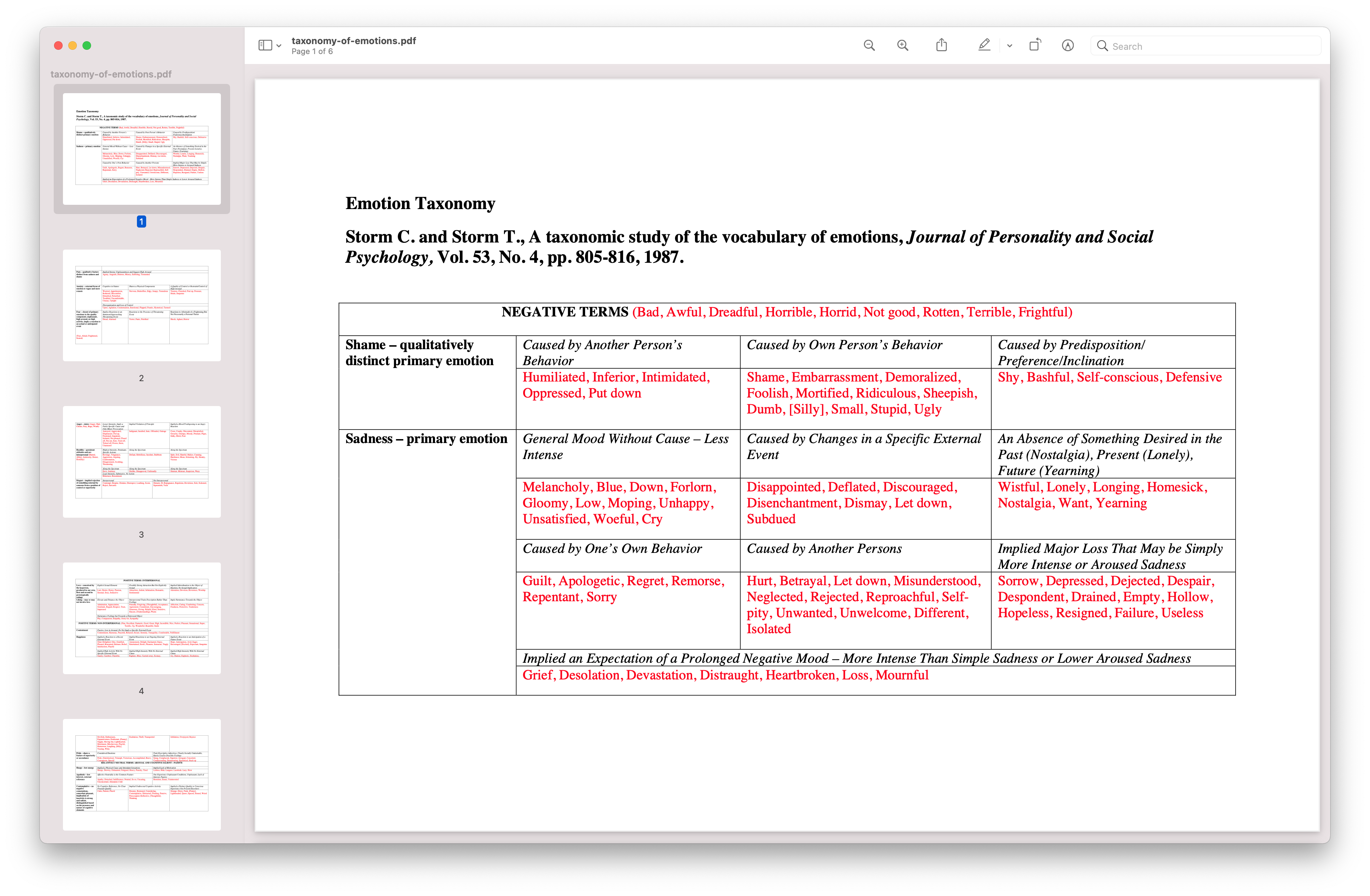Taxonomy of emotions
This post is part of a series of notes I collated during my studies at UCL’s Interaction Centre (UCLIC).
Products and services can evoke a wide range of emotions, both negative and positive. Considering these emotions in the design process is an important step in understanding behavioural impact.
Negative emotions stimulate individuals to reject (or withdraw from) the object of their emotion, positive emotions stimulate individuals to accept (or approach) the object.
In consumer research, effects of positive emotions have been found that are in line with this general tendency: Positive emotions stimulate product purchase intentions (Pham, 1998; Bitner, 1992), repurchase intentions (Westbrook & Oliver, 1991), and product attachment (Mugge, Schoormans, & Schifferstein, 2005).
In the field of ergonomics, positive emotions have been demonstrated to have additional beneficial effects during product usage. When using complex technology, positive emotions decrease usage anxiety (Picard, 1997; Helander & Tham, 2003) and contribute to the experience of usage comfort (Vink, 2005) and to general usability (Tractinsky, Shoval-Katz, & Ikar, 2000).
Products that evoke positive emotions are bought more often, used more often, and are more pleasurable to use. It‘s therefore indisputably worthwhile to design products that evoke positive emotions—products that make users feel good.
By providing a taxonomy of emotions that people can experience in response to product and service design, the typology aims to facilitate both research and design activities.
The taxonomy of emotions (Storm & Storm, 1987) (PDF, 24KB, 6 pages) is a practical source of inspiration and a means for communication in design practice and education.

Document 1: Taxonomy of emotions (Storm & Storm, 1987) (PDF, 24KB, 6 pages)
References and further readingPermalink to section titled References and further reading
- Bitner, M. J. (1992). Servicescapes: The impact of physical surroundings on customers and employees. Journal of Marketing, 56(2), 57-71.
- Desmet, P. 2012 Aug 30. Faces of Product Pleasure: 25 Positive Emotions in Human-Product Interactions. International Journal of Design [Online] 6:2. Available: http://www.ijdesign.org/index.php/IJDesign/article/view/1190/459
- Helander, M., & Tham, M. P. (2003) Hedonomics: Affective human factors design. Ergonomics, 46(13/14), 1269-1272.
- Mugge, R., Schoormans, J. P. L., & Schifferstein, H. N. J. (2005). Design strategies to postpone consumers’ product replacement. The value of a strong person-product relationship. The Design Journal, 8(2), 38-48.
- Pham, M. T. (1998). Representativeness, relevance, and the use of feelings in decision making. Journal of Consumer Research, 25(2), 144-159.
- Picard, R. W. (1997). Affective computing. Cambridge, MA: MIT Press.
- Storm, C., & Storm, T. (1987). A taxonomic study of the vocabulary of emotions. Journal of Personality and Social Psychology, 53(4), 805–816. https://doi.org/10.1037/0022-3514.53.4.805
- Tractinsky, N., Shoval-Katz, A., & Ikar, D. (2000). What is beautiful is usable. Interacting with Computers, 13(2), 127-145.
- Vink, P. (2005). Comfort and design: Principles and good practice. Boca Raton, FL: CRC Press.
- Westbrook, R. A., & Oliver, R. L. (1991). The dimensionality of consumption emotion patterns and consumer satisfaction. Journal of Consumer Research, 18(1), 84-91.
Updated on: 14 March 2021